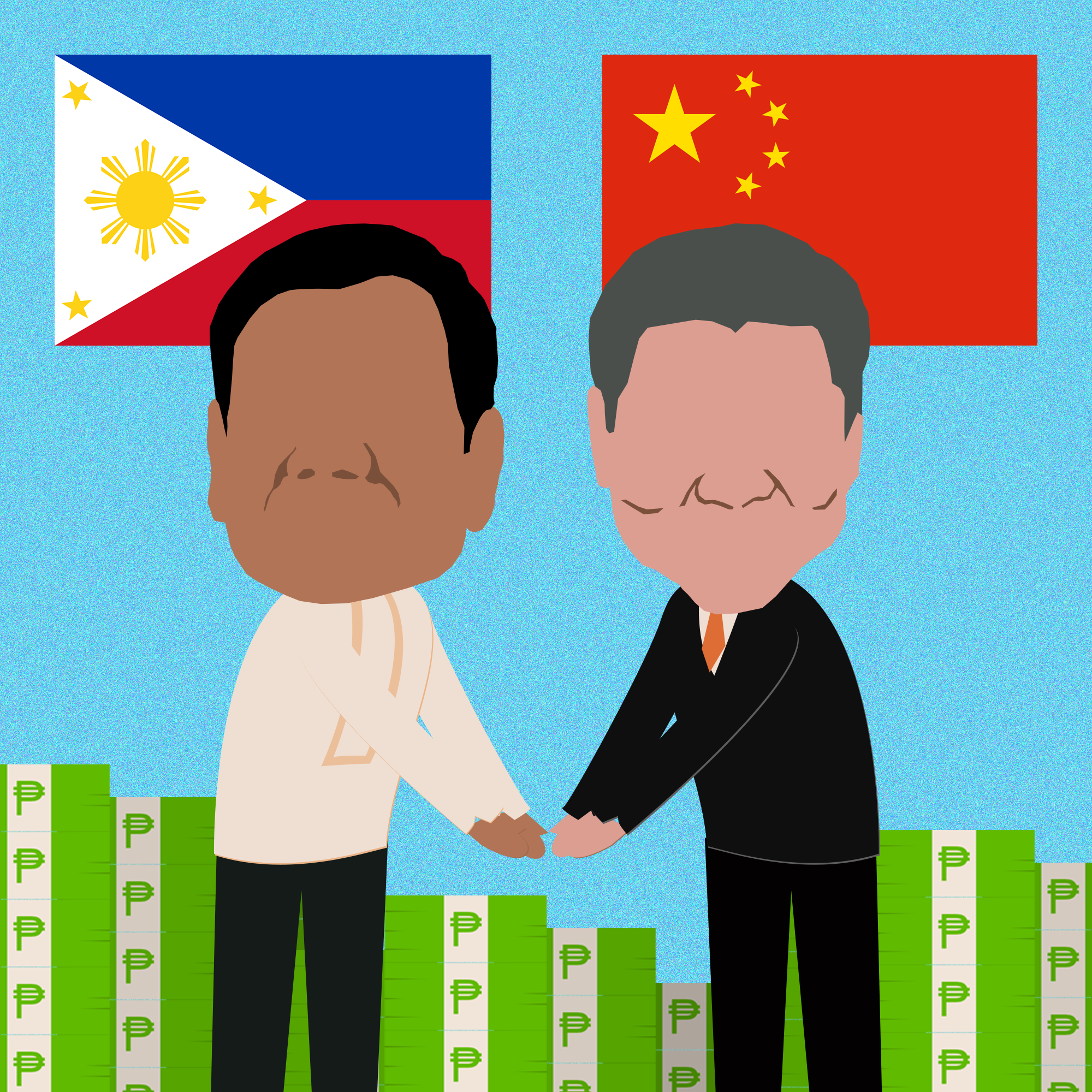By Glenis Balangue
A day before Earth Day, technology giant Apple made a bold claim. Blamed time and again for its role in sustaining the highly destructive mining industry, Apple said it plans to stop using minerals and metals for its famed iPhones and Macs. In its 2017 Environmental Responsibility Report, Apple said that to stop mining the Earth, the firm is looking at just using recycled materials from its older products.
There’s only one problem. Apple admits it still does not know how to go about it. The statement is thus nothing more than a feel-good PR from a global firm that has a controversial supply chain – from blacklisted military-controlled mining sites in Myanmar to sweatshops in China – just in time for Earth Day.
While some global giants that profit from mining resort to publicity stunt, dealing with the awful ill effects to the people and environment of a massive industry that digs up lands and forests for precious minerals, and dumps toxic wastes, is an urgent issue for many local communities.
This is the story of mining communities researched by IBON in the towns of Sipalay in Negros Occidental, Sta. Cruz in Zambales, Macarthur in Leyte, and Kasibu in Nueva Vizcaya.
Forests, farmlands destroyed
Barangay San Jose in Sipalay City in Negros Occidental has been dubbed as a mining town because it hosts one of the biggest mining operations, mainly copper, in the country since the 1950s. The barangay stands as a testament to the irreversible environmental damage that wanton mining brings. Hectares of productive farmlands were lost when these were turned into the mine tailings pond of the Maricalum Mining Corp. The firm had three tailings dam failures from1982-1996 that displaced more than a thousand farmers and fisherfolk. Some of them eventually came back and tried to eke out a living through swidden (kaingin) farming on the mountainside and charcoal making. Many also migrated to urban areas to find work as domestic help or as construction workers.
In Sta. Cruz, Zambales, some 20 hectares of farmlands in Barangay Lomboy were entirely covered in red mud from nickel mining operations at the height of Typhoon Labuyo in August 2013. Residents also reported that 30 more farm lots in other barangays were affected by siltation from mining operations in the mountains. But even during non-typhoon season, the rice fields are regularly covered with a layer of red silt. In Barangay Bolitoc, around 10 hectares of farms, fishponds and saltponds were converted into a stockpile of the mining companies.
Some 500 hectares of land planted with citrus trees in Barangay Didipio, Kasibu in Nueva Vizcaya were destroyed as Australian mining giant OceanaGold Philippines built its open pit gold mine. Farms suffer from lack of water for irrigation. More than 30 hectares of farmland are affected by the declining water level of the Surong-Camgat river system while around five hectares have totally dried up. Harvest has also gone down.
In Barangay Pongon in Macarthur, Leyte, Chinese firm Nicua Corporation mined some 70 hectares previously planted to rice, aside from another nine hectares in two other villages. Due to the loss of the nutrient-rich topsoil, waterlogging, as well as oil and fuel spills on the rice farms, affected crops did not grow well in the areas near the mining sites.
Aside from destroying farmlands, mining firms also denude forests to make way for their operations. In Sta. Cruz, for instance, the mountains are now bare from the timber cutting of mining companies. Bamboo thickets, a source of bamboo shoots sold for additional income or used for food, are covered in reddish mud. In Didipio as well as Sta. Cruz, mining companies are prohibiting the locals from gathering firewood, food, medicines, and other forest-based products from the forests within their concession areas.
Water resources poisoned
Meanwhile, bodies of water have compromised fishery-based livelihood and residents’ access to clean and safe water such as in Barangay San Jose in Sipalay. Residents there could no longer catch tilapia from streams near their farms and houses due to contamination that has already resulted in several cases of fishkill. Incidents of fishkills as a result of contamination from magnetite mining were also reported in Macarthur, Leyte. In Barangay Didipio, locals no longer catch any fish when they use to get 10 to 20 kilograms of fish everyday. Fishing used to provide extra income and food for these communities.
Communities blame mining operations for the changes in the bodies of water in their town. Those living near the riverbanks have observed that the river has become shallower due to heavy siltation from soil, which flows downstream especially during the rainy season. Those living in the coastal areas are not free from siltation either. Fisher folk who live along the coastline of Barangay Pagatpat in Sta. Cruz, for example, suffer from a thick layer of reddish mud that has settled in the coral reef. Heavy siltation destroys the areas where fish lay eggs and hatch.
People’s health harmed
Aside from water and soil pollution and contamination, air pollution is also a major concern for mining-affected communities. In Barangay San Jose, a high percentage of households reported upper respiratory illnesses or symptoms such as colds and coughs, which may have been aggravated by dust from the mining’s waste dump. This may also be the result of their livelihood, charcoal-making, which entails workers to work day and night while being exposed to soot, fumes and heat for several days.
In Sta. Cruz, Zambales, dust from the hauling trucks has also posed a big health problem to residents located close to the roads that mining companies use and those residing near the stockpiles. Those who live close to the road inhale dusts from the hauling trucks. People who wade or bathe in the silted rivers and streams experience rashes and itchiness.
Urgent reforms
These are some of the pressing environmental, economic and health issues that communities with large-scale mining operations face. The country does not have to wait for Apple to find a way on how to recycle for its iPhone to undertake urgent reforms that will protect the communities and will stop further damage from the mining of the country’s mineral resources.
President Duterte’s appointment of staunch anti-mining advocate Gina Lopez as Environment Secretary has been a positive development overall. But her efforts to ban destructive mining have been relentlessly countered by a strong pro-mining lobby, with apparent backing from Cabinet officials with ties to the controversial industry.
Despite this challenge, Duterte’s stated commitment to regulate mining, a strong Environment chief, plus an ongoing peace talks with revolutionary groups that include among others a deal, i.e. Comprehensive Agreement on Social and Economic Reforms (CASER) that intend to address a host of key social and economic issues including mining, all give an extraordinary opportunity to push for meaningful policy reforms.
The industry needs to be developed it within the framework of national industrialization and anchored on the principles of social justice, respect for people’s rights and welfare, environmental conservation and defense of national sovereignty and patrimony.
There is a necessity for the government to function as a genuine regulatory body for mining operations to protect the environment and to ensure proper compensation for damages. The government has a key role in drawing up a national industrialization program wherein mineral resources are processed in the country and become the raw materials for the building of strategic domestic industries such as steel and petrochemicals.
The prohibition of mining operations in critical areas such as small island ecosystem, coastal, primary forests and watersheds should also be ensured. Likewise, rules that govern the proper disposition of mine waste and its implementation should be included. There should be a practice of democratic consultation among the communities and stakeholders in all mining activities to be undertaken. ###






